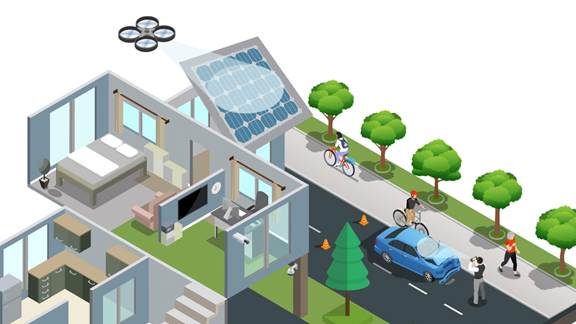Low friction sales, application and onboarding
Advancements in data openness, ‘regtech’ services behind the scenes, and investment in the user experience make seamless application processes and journeys commonplace. Authentication via services like Facebook or Google enables digital data exchange that makes providing on-boarding information simple. That means higher conversion rates on new customers, and easier routes for those who are ready to extend their relationship with an existing provider. For covering short term insurance needs, on-demand on-boarding is a key enabler.
Interface agnostic service
Leading insurers will maintain ‘one view’ of the customer - a single, secure data repository that monitors customer details, products held, and interactions over time as well as relevant data from other sensors, services and partners that customers choose to integrate. In turn, this supports a seamless, multi-interface customer journey. For customers, that means beginning applications or claims in one place, and completing them wherever is convenient - such as uploading photos of a damaged vehicle at the scene, and reviewing the adjusters report at home. For sales, customer support, and claims handling teams, easy access to customer details means they always have relevant information at hand to deliver value. Simpler journeys will make routine tasks easier to automate and monitor, reducing the risk of errors, making life easier for staff and improving morale.
Broad, customer-focused partner networks
Insurance propositions will increasingly connect customers to a broad network of partners. This allows insurers to combine offerings and provide bundles of specialist products and services beyond simply paying out claims. For example, on-demand platforms can supplement the support and prevention offering of an insurer. These services might mitigate negative outcomes and adversity e.g providing customers with access to on-demand lodging near their home in case of home damage, or more complementary preventative services - e.g. asset security and monitoring to prevent damage in the first place.
Sensor powered protection and claims
With the proliferation of connected sensors, a broader range of data delivery mechanisms, and the ability to use machine learning to efficiently draw inferences, insurers will be able to better protect and serve customers. For example, camera-equipped drones could facilitate the remote assessment of property conditions for pricing, maintenance, and claims assessment purposes. For car insurance, the purchase, renewal, and claims management journeys can all be sped up by using smartphone cameras and machine vision to ID and assess vehicle damage.
